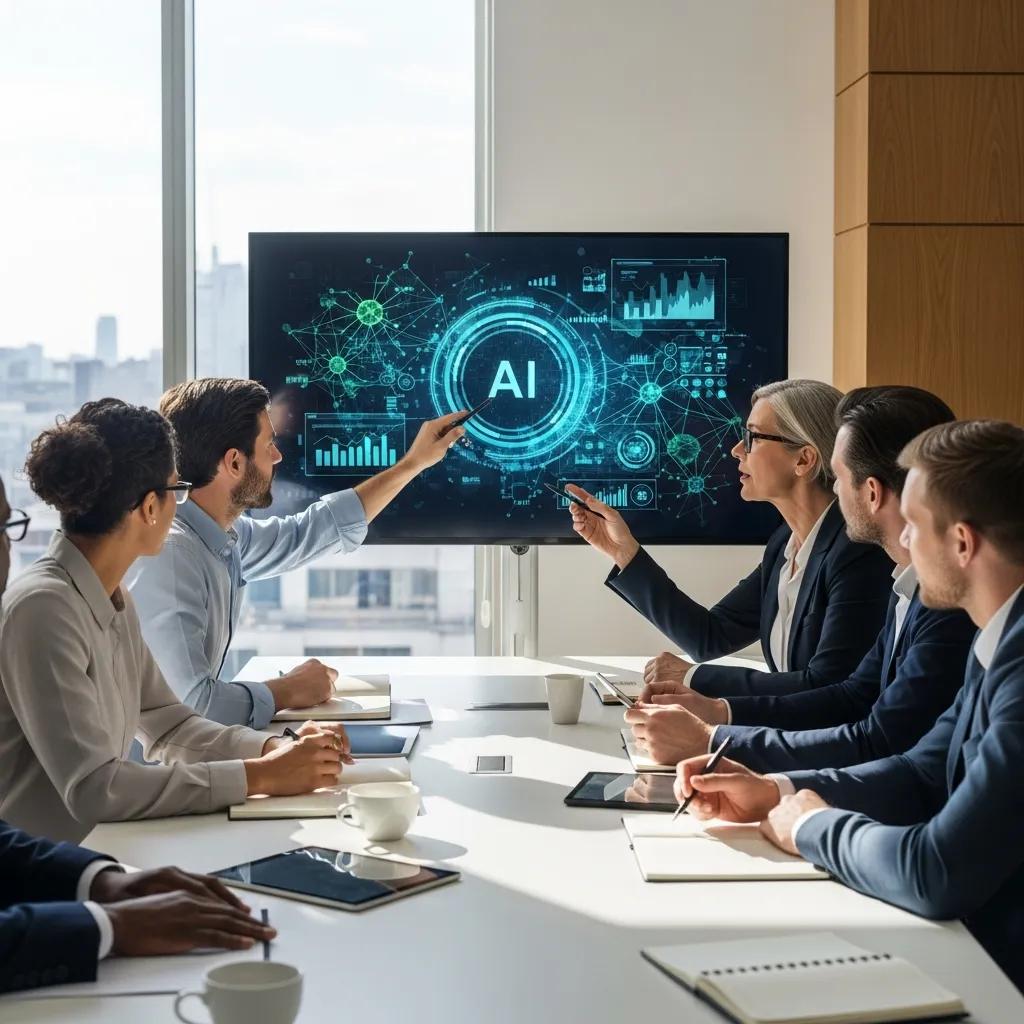Generative AI is rapidly changing business operations, offering applications that boost efficiency and create new opportunities. This exploration of generative AI business applications unveils its transformative potential. We’ll explore real-world examples, diverse applications across sectors, and the challenges of successful implementation.
The rise of generative AI in business marks a significant shift. This is akin to the introduction of the Netscape web browser or the Apple iPhone. These innovations redefined their eras, and generative AI promises to revolutionize business.
Generative AI Business Applications: Reshaping Industries
Generative AI is reshaping industries. It empowers businesses to create things they never could before, generating text, images, videos, and code. Forrester recognizes this, listing generative AI for language and AI agents among its top 10 emerging technologies for 2024.
Companies like Bolt use generative AI chatbots to handle customer complaints. Deutsche Telekom uses AI to improve its assistant for managing millions of customer interactions. This not only saves money but allows human agents to focus on more complex issues.
Software Development
Tools like GitHub Copilot, Tabnine, and Code Snippets AI assist developers. These generative AI tools generate code, fix bugs, create documentation, and more. Imagine writing code faster and with fewer errors; AI personalization speeds up development while deep learning assists in accuracy.
Generative AI is changing how software is developed. This automation covers assistive coding, bug detection, and even composing documentation. It ultimately improves developer productivity. They focus on the coding while AI handles mundane jobs.
Marketing and Content Creation
Imagine crafting marketing copy, social media posts, or scripts in seconds. Tools like Jasper, Canva, and Runway make this possible.
Businesses can generate creative content instantly. A SEMrush report shows that most businesses see better marketing results with AI.
Customer Service
24/7 personalized customer service is achievable. Generative AI powers chatbots and virtual assistants. An example is IBM’s Watson Assistant, released in 2016, which handles routine inquiries. This frees up human agents to handle complex issues and allows them to better understand context.
AI-driven customer service leads to greater customer satisfaction.
Research and Development
Generative AI accelerates drug discovery and can even create molecules and examine their behavior. Tools like NVIDIA’s BioNeMo platform exemplify this. Researchers are using generative AI for material science to find better ways to create self-assembling structures. Generative AI is pushing the boundaries of large language models to allow this research and development to move quickly.
The Benefits and Challenges of Generative AI Applications
Generative AI transforms operations, fuels efficiency, and drives business growth. It lets businesses focus on their competitive advantages, like creativity. An EY survey found that most insurance companies were already keen on generative AI.
According to IBM’s 2022 global AI adoption index, 35% of companies use AI. Most find it helps cut costs and automate repetitive tasks. AI also allows human workers to engage in more face-to-face customer interaction.
Significant Opportunities
Generative AI is revolutionizing software development. It boosts programmer productivity through real-time code suggestions and automated debugging. These applications go beyond streamlining processes.
They unlock unprecedented value across sectors by creating a more innovative work environment. This enables personalized solutions for dynamic markets.
Challenges to Address
Transformer models underpin many current generative AI systems. These models, while powerful, create data management issues.
Generative AI isn’t a simple plug-and-play solution. CIOs must make key enterprise architecture decisions about where data resides and how it is accessed. Their guidance ensures data sets remain reliable and quality control remains intact.
CIOs can make informed business decisions in this evolving industry. They need to carefully consider data management needs as they decide how AI models should interact with underlying data. Product designers will look for CIOs for this important data so they can move into the age of AI and design accordingly.
FAQs about generative ai business applications
What is generative AI used for in business?
Generative AI automates business tasks, analyzes data for trends, and improves creative processes. It also boosts customer experience through customized information. Business decision makers use this customized information to inform themselves on latest generative AI tools. Businesses use these tools to improve their recommendation engines so that the natural language used for outputs sound accurate.
What are generative AI applications?
Generative AI applications span various fields. These include writing various creative content, such as articles, blogs, ad copy, website text, and personalized marketing materials. It can also write poetry, song lyrics, business plans, project proposals, and personalized emails. It assists in answer questions clearly by writing professional documents with helpful information. AI can generate text, and write code so that generative AI technologies can produce unique results that meet specific business needs and objectives.
It can also summarize content, translate languages, analyze information, and produce code.
What is generative AI for enterprise applications?
Generative AI for enterprise applications refers to using AI in sophisticated settings. This includes company processes and data management. Product managers often utilize this generative AI technology during their development processes.
What are some valid business use cases for generative AI?
Valid use cases include boosting customer service by personalizing recommendations. This can be based on behaviors or customer interactions with chatbots. AI can also create chatbots to answer questions efficiently. AI continues to boost performance and allows for better cost reductions.
Additionally, generative AI streamlines product design for industries like consumer packaged goods and manufacturing. This is accomplished using neural networks for design ideation.
AI assists in content creation with image generators. These tools help generate ads and videos quickly. AI also analyzes financial and economic patterns and generates forecasts for analysts. It provides insights on market performance and assesses risk levels. Learning algorithms within these AI applications create powerful outputs that humans can use for the benefit of the entire world. Learning models help create a world of personalized recommendations.
In short, generative AI automates research and creates highly customized solutions. These solutions draw on data from a variety of resources, benefiting businesses and end users. Product designers can use all this data for improving upon products already in the marketplace, and creating new product categories. With access to a broader set of underlying data sets and unstructured data such as text, audio, and images, this process is quicker and simpler than ever.
Harnessing the Future: Generative AI Transformations
Generative AI business applications offer immense potential. Both small and large businesses can improve efficiency, boost creativity, and provide valuable solutions. They create personalized experiences, improving work-life balance and staff well-being. This boosts operational efficiency at many levels, ultimately increasing productivity.



